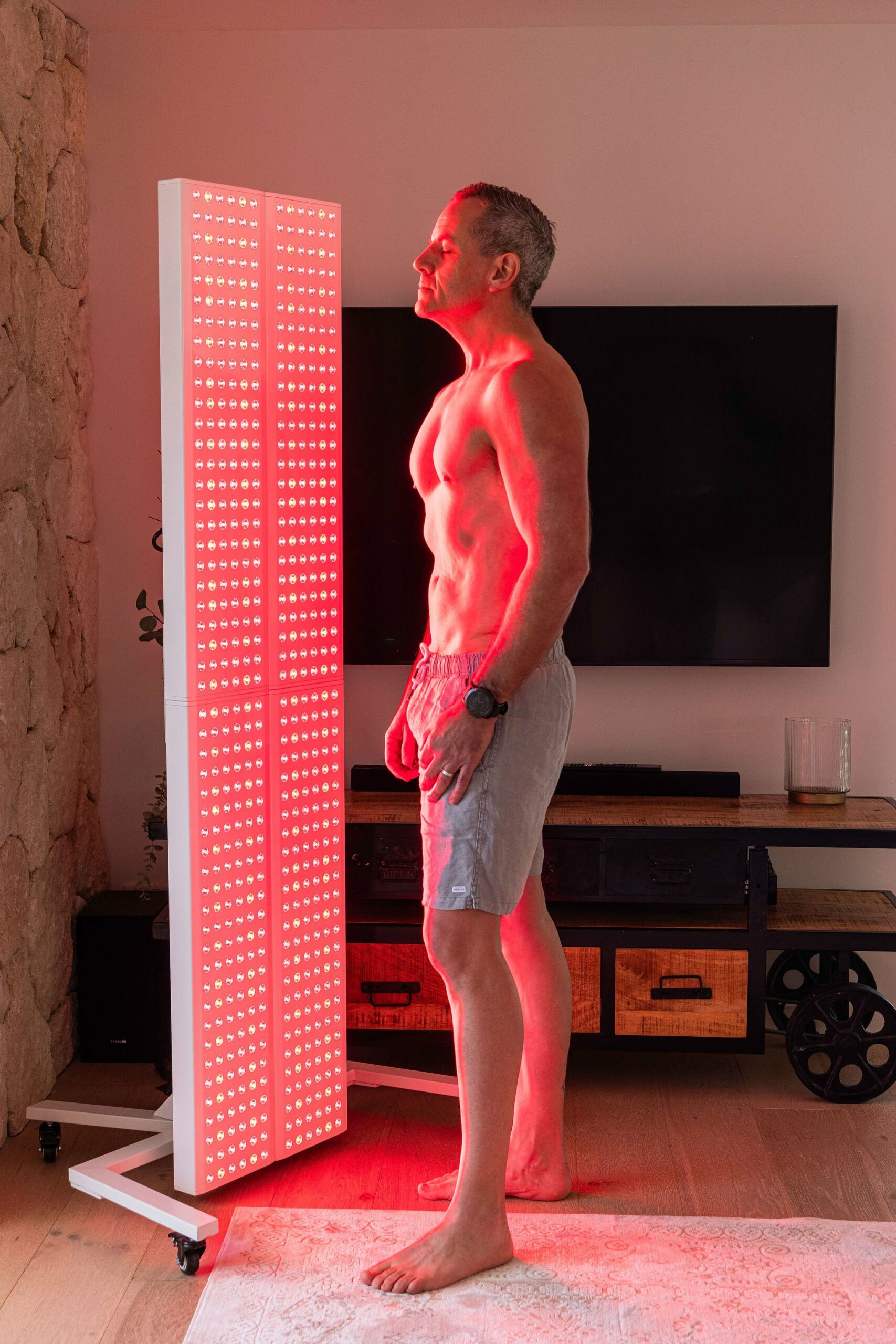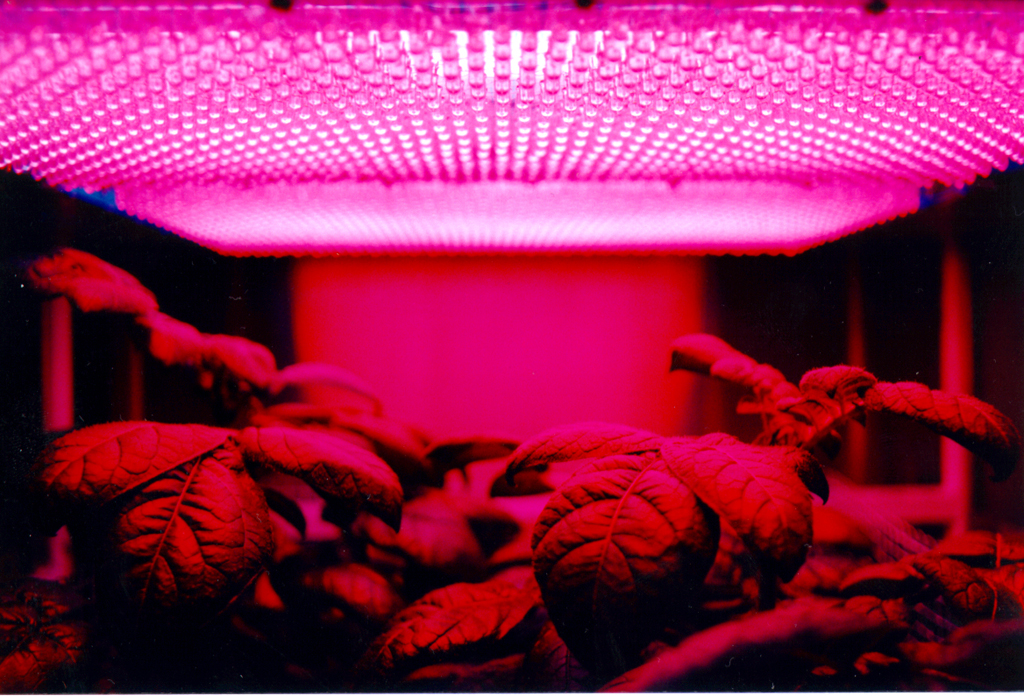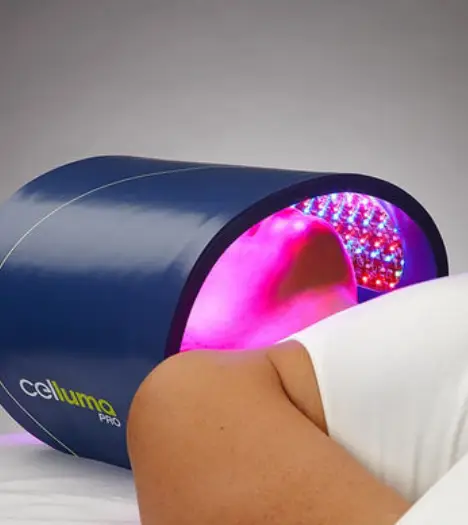What is the Celluma PRO?
The Celluma PRO is a multi award winning light therapy multifunctional device designed for various health and beauty concerns. It's particularly effective for treating acne and reducing visible signs of aging like wrinkles and fine lines. Not limited to facial treatments, this hands-free device can be placed over different parts of the body for targeted pain relief, including areas like the spine, hips, and knees. The Celluma PRO measures 24” x 10” overall with a treatment area of 16” x 8”.
In just three years, the award-winning Celluma Series has gained global recognition and is now widely used by skincare professionals like estheticians, as well as medical experts including dermatologists, plastic surgeons, cosmetic surgeons, and pain management specialists. The unique design sets it apart in the field.
One of the standout features of the Celluma PRO is its 3-mode setting that specifically targets Acne, Wrinkles, and Pain. Unlike other LED light therapy panels on the market, it offers this multifaceted approach in a single device. Added conveniences include its lightweight design and portability, as well as being both stand-free and hands-free for easy usage.
Good For:
Celluma PRO: How Does It Rate?
Pros
- Versatile Treatment Options: Celluma PRO offers red, blue, and infrared light therapies, making it suitable for a wide range of health and skincare concerns.
- Scientifically Backed: The device's effectiveness is supported by numerous scientific studies, lending credibility to its treatment capabilities.
- Enhanced Cellular Activity: Stimulates the mitochondria in cells to boost ATP production, which is essential for various biological processes.
- Anti-Aging Benefits: The red light therapy enhances collagen and elastin production, which can lead to smoother skin and reduction of fine lines and wrinkles.
- Acne Treatment: Blue light therapy targets acne-causing bacteria and reduces inflammation, helping to clear up skin.
- Pain Relief: Infrared light is effective in deep-tissue healing and can be a non-invasive option for pain management.
- Full Facial Coverage: Designed to cover the entire face, providing comprehensive treatment for various skin concerns.
- Body Treatment: Can be positioned easily over any part of the body, making it useful for treating areas like the back, shoulders, and legs.
- Hands-Free and Stand-Free: Offers a convenient treatment experience without the need to hold the device in place.
- Portable and Lightweight: Easy to move and store, which makes it suitable for both home and professional use.
- FDA Approved: Meets the strict safety and efficacy guidelines set by regulatory body
- Long-Lasting LEDs: Built with durable LED lights that have a long lifespan, ensuring value for the investment.
Cons
- High Cost: The device comes with a significant price tag, making it a considerable investment.
- No Returns for Used Devices: Once you've used the device, it can't be returned, which could be risky if it doesn't meet your expectations.
- Mixed Reviews: Customer opinions on the device's effectiveness vary, so results may not be guaranteed for everyone.
- Learning Curve: Some users may find it takes time to understand how to best utilize the device for their specific needs.
- Treatment Time: Depending on the condition, effective treatment might require regular and extended sessions, which could be time-consuming.
About the Brand
BioPhotas, Inc. is an FDA-registered company specializing in the production of the award-winning Celluma Series of LED devices. These devices use unique photo-therapeutic technology to treat various skin, muscle, and joint conditions, including acne, wrinkles, and pain.
Their flagship offering, the Celluma PRO, is a market leader in aesthetic light therapy. In 2016, it became the first device of its kind to be CE-Certified for dermal wound healing in the European Union. The company ships its products globally, including to Canada, Europe, Asia, Australia, and New Zealand. Guided by a dedication to evidence-based, scientifically validated products, BioPhotas upholds core values of honesty, accuracy, and integrity while providing accountable, dependable, and compassionate customer service.
What Are the Celluma PRO Benefits and How Does it Work?
The Celluma PRO LED Light Therapy device is a versatile treatment option that employs red, blue, and infrared light to stimulate cellular activity. These lights target the mitochondria within cells to boost the production of adenosine triphosphate (ATP), which is essential for a myriad of health benefits.
Celluma's approach is backed by scientific studies. For instance, Ralf Jager's research in the Journal of Functional Foods highlighted the health advantages of increasing ATP levels through supplementation. The device utilizes photons to penetrate the body at various wavelengths, each serving a specific therapeutic function.
In the realm of skin health, red light focuses more on surface-level treatment. It is particularly effective in stimulating the production of collagen and elastin, leading to more elastic and youthful-looking skin. Studies, such as one by Elisabetta Sorbellini, Mariangela Rucco, and Fabio Rinaldi in Lasers in Medical Science, have discussed the efficacy of LED therapy for treating dermatological conditions.
Blue light therapy, on the other hand, is highly effective for treating skin issues that go beyond surface level, such as acne. It penetrates deeper into the skin to kill bacteria, reduce inflammation, and promote healing. A study by Michael H Gold in the Journal of Cosmetic and Laser Surgery substantiated that blue light therapy effectively reduces acne lesion size.
Infrared light has its own set of benefits, particularly in terms of deep-tissue healing, pain relief, and reducing inflammation. George D Gale's research published in Pain Research and Management highlighted the effectiveness of infrared light therapy in alleviating chronic back pain.
Besides the specific wavelengths, the combined use of red and blue lights can also prevent acne outbreaks and stimulate collagen production, as confirmed by research like Susan Pei et al.'s study in the Indian Dermatology Online Journal.
The therapeutic potential of red light for skin rejuvenation is also echoed in a study from the Journal of the American Academy of Dermatology, which revealed that red light therapy increased levels of collagen, elastin, and hyaluronic acid.
If you're seeking other options for light therapy, you might also consider products like Tendlite and Platinum LED, which have also garnered positive reviews for their capacity to relieve pain, improve mood, and support overall well-being.
Quick Facts & Features
| Brand | Safety |
|---|---|
| Product | Celluma PRO |
| Form | Red Light Therapy Panels, Beds, Massage Chairs, Detox Kits |
| Warranty | FDA Compliant |
| Age | Adults |
| Skin Type | All types |
| Benefit | Reducing pain and inflammation, relaxing muscles, repairing wounds and tissue, rejuvenating the skin, boosting mood and brain health, improving exercise performance, etc. |
| Price | $1995 |
| Shipping | Free Shipping |
| Warrenty | Warranty |
| Purchase | Official website |
How to Use It?
Using the device is straightforward, but it's important to adhere to the comprehensive guidelines that come with the product.
The device runs on wall power, so you'll need to plug it in. Once it's powered up, you can either lie down and position it over your face or focus it on another area of your body that may benefit from pain relief or improved skin health. You have the option to select a specific mode—either acne, wrinkles, or pain. After completing your session, simply remove the device and switch it off.
Safety
The Celluma PRO is generally considered safe when used according to the manufacturer's guidelines. It has received FDA clearance for various therapeutic applications, including pain relief, acne treatment, and anti-aging benefits. The device uses LED technology, which is non-invasive and does not emit harmful UV rays. It is essential to follow the detailed instructions provided with the product for proper positioning, treatment duration, and mode selection to ensure safe and effective use.
Any Side Effects?
While most users have a positive experience with the Celluma PRO, some individuals might experience mild side effects. These can include temporary redness, itchiness, or a slight warming sensation at the treatment site. These effects are generally short-lived and resolve on their own shortly after the therapy session ends. However, it is always advisable to consult a healthcare provider before starting any new form of therapy, especially if you have pre-existing medical conditions or are taking medications.
Reviews From Users
We went through reviews posted online by users and it is clear that they overwhelmingly expressed satisfaction with the effectiveness of the product. Below is a selection:
— Michelle Vikos – Waldorf Astoria

— MIke Niklas- Huntington Beach, CA

— Samantha Baptista – Las Vegas NV

— Scott K, Baysville, Ontario

Frequently Asked Questions
What is the Celluma PRO?
The Celluma PRO is a versatile LED light therapy device designed to treat a variety of conditions such as acne, wrinkles, and pain.
Is it FDA-approved?
Yes, the Celluma PRO is FDA-approved for treating a variety of conditions, including skin, muscle and joint pain, as well as wrinkles and acne.
How do I use the Celluma PRO?
Position the device over the treatment area after plugging it into a power source. Select the appropriate mode for your condition: acne, wrinkles, or pain. Follow the treatment times as indicated in the user guide.
How close to the area being treated should Celluma be positioned?
Celluma should be placed as close to your skin as feasible for optimal results. Its unique, patented flexible design enables it to conform closely to the treatment area, potentially enhancing its effectiveness.
What is the recommended treatment time and frequency?
Treatment times can vary based on the condition being treated but generally range from 15 to 30 minutes. Frequency recommendations are often between 2-5 times a week, depending on your healthcare provider's advice.
Can I use it along with other skincare or pain management treatments?
Yes, the device can generally be used in conjunction with other treatments. However, consult your healthcare provider for a tailored treatment plan.
Is the device portable?
Yes, the Celluma PRO is lightweight, stand-free, and hands-free, making it easy to position over any part of the body.
How much does it cost, and is it worth the investment?
The Celluma PRO can be on the pricier side, but many users find its multifunctional capabilities to be worth the cost. Keep in mind that there are no returns for used devices.
Are there any contraindications for using Celluma PRO?
Individuals with certain medical conditions or those who are pregnant should consult their healthcare provider before using the device.
Does it work on all skin types?
LED light therapy is generally suitable for all skin types, but individual results may vary.
Conclusion
In summary, Celluma and its flagship product, Celluma PRO, stand as pioneering solutions in the realm of LED light therapy. The unique, patented design allows for exceptional versatility, enabling users to target various areas of the body effectively. Whether you're dealing with acne, wrinkles, or body pain, this device offers a comprehensive approach to skin health and overall well-being. Its benefits are underpinned by a host of research studies, adding a layer of credibility and assurance for potential users.
While the initial investment might be significant, the range of applications and positive customer testimonials suggest that it may be well worth it. The Celluma PRO is more than just another gadget; it's a scientifically-backed wellness tool designed to improve your quality of life in a non-invasive manner. So, if you're considering diving into the world of LED light therapy, the Celluma PRO could very well be your gateway to healthier skin and a pain-free existence.
Red light therapy is a type of therapy that uses red or near-infrared light to treat a variety of conditions. During a red light therapy session, a person is exposed to a specific wavelength of red or near-infrared light that is delivered through a light-emitting device. The light penetrates the skin and reaches the cells within the body with a range of therapeutic effects.

Red light is a type of visible light, Its wavelength falls between approximately 630 and 700 nanometers (nm) on the electromagnetic spectrum. Red light is often used in light therapy treatments for the skin, as it has been shown to have the most beneficial effects on skin cells and collagen production.
Near-infrared (NIR) light, on the other hand, has a longer wavelength than visible red light and falls between approximately 700 and 1200 nm on the electromagnetic spectrum. NIR light is not visible to the human eye, but it can penetrate deeper into the skin and other tissues than visible light, making it useful for a variety of therapeutic applications ranging from wound healing to inflammation reduction or improved circulation, among other benefits.
Different Red Light Therapy devices usually deliver slightly different wavelength ranges that research has shown to be the most effective for the concern they are being recommended for.
Red Light Therapy (RLT) strengthens the mitochondria, the cell’s powerhouse, where cell energy is created. Adenosine Triphosphate (ATP) is the critical energy-carrying molecule that is found in all living organisms. By optimizing the function of the mitochondria, more ATP is produced and with increased energy cells can function optimally.
This scientific breakthrough resulted in scientists discovering Red Light Therapy’s ability to stimulate and speed up tissue repair and growth. Red Light Therapy is now widely used for maintaining a healthy complexion, speeding up muscle recovery, reducing inflammation, improving sleep, treating neurological conditions, balancing hormones, treating pain, and even losing weight.
Research has also indicated that Red Light Therapy can help to restore cellular balance and alleviate the negative impact of blue light exposure. The prevalence of blue light in our society has become a growing concern as many individuals spend prolonged periods of time looking at screens on a daily basis.
Red Light Therapy (RLT) is also called:

Low-Level Light Therapy (LLLT), Photobiomodulation (PBM), Cold Laser Therapy, Photonic Stimulation, Low-Power Laser Therapy (LPLT), Phototherapy
A Brief History of Red Light Therapy
The journey of Red Light Therapy (RLT) has been both fascinating and impactful, starting from its humble origins in the late 19th century. Dr. Niels Ryberg Finsen, the pioneer in light therapy, made a groundbreaking discovery in 1896 that light could be harnessed to treat Lupus Vulgaris, a form of tuberculosis affecting the skin. His work, which led to the tangible healing of skin lesions, was so revolutionary that he received the Nobel Prize in Physiology in 1903.
Fast forward to 1960, Theodore H. Maiman invented the first operational laser, fulfilling Albert Einstein's theories on the principles of lasers laid out in 1917. This invention opened new avenues for RLT, allowing more precise applications.

NASA took an interest in Red Light Therapy in 1987, conducting experiments to examine its effects on plant growth in space missions. These studies hinted at RLT's potential to benefit not just human health but also broader ecological systems.
In the same vein, Endre Mester's work in 1967 set the stage for modern RLT applications.
His experimentation with low-level laser therapy on skin cancer effects demonstrated the technique's efficacy and led to FDA approval for wound healing in 2002.
The advent of LED technology in the 1990s was a game-changer, offering an efficient and cost-effective alternative to traditional light bulbs. This technological leap made light therapy more accessible to the general public, including its use in sports medicine where physical therapists reported quicker recovery times for sports-related injuries.

One of the most recent and exciting developments in RLT is its potential role in weight management. Studies indicate that Red Light Therapy can influence hormones like Leptin and Ghrelin, which play key roles in regulating appetite and metabolism. This makes RLT a promising avenue for non-invasive weight loss treatments.
As RLT continues to evolve, its applications keep expanding, crossing multiple disciplines from medicine to ecology. Researchers are continuously probing its potential, finding new ways to apply this age-old yet ever-advancing technology.
Our articles exclusively rely on primary sources of information, encompassing peer-reviewed medical journals and esteemed academic institutions.
- Health And Ergogenic Potential Of Oral Adenosine-5′-Triphosphate (ATP) Supplementation
- Photodynamic And Photobiological Effects Of Light-Emitting Diode (LED) Therapy In Dermatological Disease: An Update
- Clinical Efficacy Of Home-Use Blue-Light Therapy For Mild-To Moderate Acne
- The Ultimate Guide To Red Light Therapy quotes
- A Controlled Trial to Determine the Efficacy of Red and Near-Infrared Light Treatment
- Light-Based Therapies In Acne Treatment
- Low-Level Red And Infrared Light Increases Expression Of Collagen, Elastin, And Hyaluronic Acid In Skin
- Infrared Therapy For Chronic Low Back Pain: A Randomized, Controlled Trial
- Phototherapy with Light Emitting Diodes: Treating a Broad Range of Medical and Aesthetic Conditions in Dermatology
- LED lights: Are they a cure for your skin woes
- Photobiomodulation: The Clinical Applications of Low-Level Light Therapy
- Mechanisms And Applications Of The Anti-Inflammatory Effects Of Photobiomodulation
- Effect of Blue Light on Acne Vulgaris: A Systematic Review



